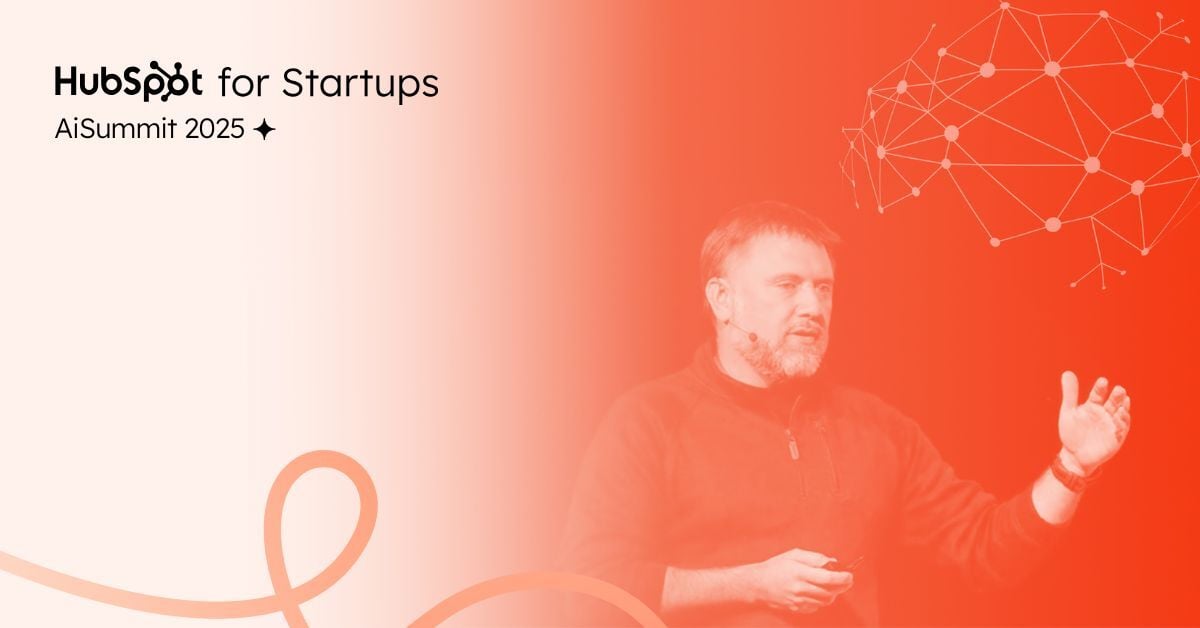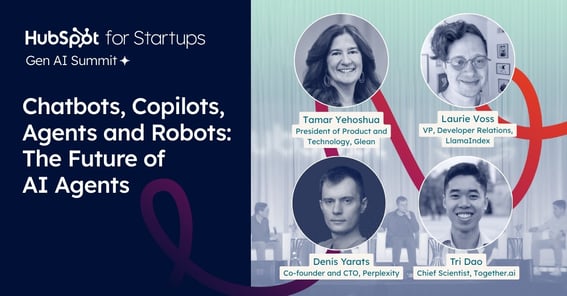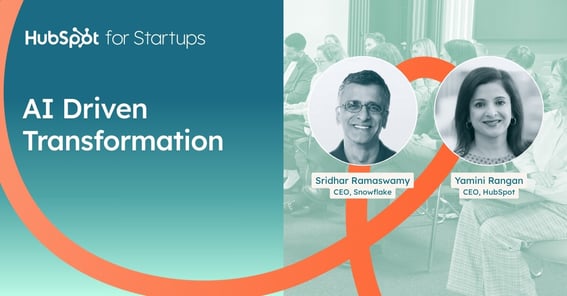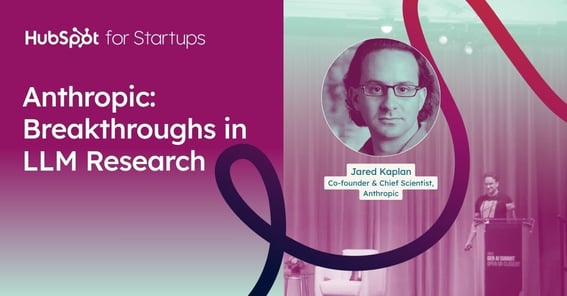Building the Future of AI Agents
Learn HubSpot's 4-layer framework for AI agents and discover how industry leaders are implementing agentic AI to transform business operations today.

Learn HubSpot's 4-layer framework for AI agents and discover how industry leaders are implementing agentic AI to transform business operations today.

Welcome to our exclusive AI Summit series! Over the next three months, we'll be bringing you weekly video sessions from HubSpot for Startups' annual AI Summit in San Francisco. Each week, we'll feature powerful insights from speakers representing tech giants like Anthropic, Atlassian, Clay, Hightouch, Replit, and HubSpot, alongside wisdom from the Valley's leading tech investors. This transformative content will help you understand and implement the AI technologies reshaping business today.
We're kicking off with two power-packed presentations that cut through the hype around AI agents to reveal how companies are actually implementing agentic AI to scale their operations and transform their workflows.
In his keynote address, Nicholas Holland, SVP of Product at HubSpot, shared how the company is approaching AI agents with a mission to help small and medium businesses scale efficiently. With 50% of businesses failing in their first five years, Holland positioned agents as a potential "cheat code for scale" that could fundamentally change this trajectory.
Holland presented HubSpot's internal framework for understanding agents through four distinct layers:
Holland emphasized that technology might not be the limitation anymore—it's organizational adoption. He introduced concepts like "agent trainers" and "agent managers" as emerging roles, with some customers already requesting to see their AI agents listed alongside human employees in performance dashboards.
The panel discussion, moderated by Matt Thompson from AWS, brought together leaders from HubSpot, Turing, AWS, and Glean to discuss the practical realities of deploying AI agents today.
The panelists offered complementary perspectives:
Randy from AWS outlined three critical layers for agentic platforms:
Multiple panelists agreed that organizational change management, not technology, is becoming the primary challenge:
A surprising consensus emerged around accepting higher error rates to accelerate learning:
The panelists' closing thoughts painted an optimistic but realistic picture:
The session made clear that while the technology for AI agents is rapidly maturing, the real challenge—and opportunity—lies in thoughtfully integrating these tools into human workflows, accepting imperfection as part of the learning process, and thinking bigger about what becomes possible when every knowledge worker has AI-powered assistance.
~~~~~
AI Disclaimer: AI helped us summarize the key points from these videos, and our editorial team reviewed everything to make sure it's clear and correct.
Why wait for months to get access to all the videos when you can get it now? Sign up below and not only will you get early access to the full set of video sessions from this year's summit, but you'll have access to the videos from the past two summits as well; which alone is over ten hours of educational content and insights! Fill out the form to gain instant access to hours of AI video goodness!

Discover insights from AI leaders at Glean, Perplexity, LlamaIndex, and Together.ai on defining AI agents, building frameworks, and what's next for agent technology.

Discover how HubSpot and Snowflake CEOs are implementing AI strategies, evolving business models, and creating differentiated value in the era of generative AI.

Anthropic's Jared Kaplan explains the exponential growth of AI capabilities, Constitutional AI's advantages, and how Claude is transforming business workflows.
